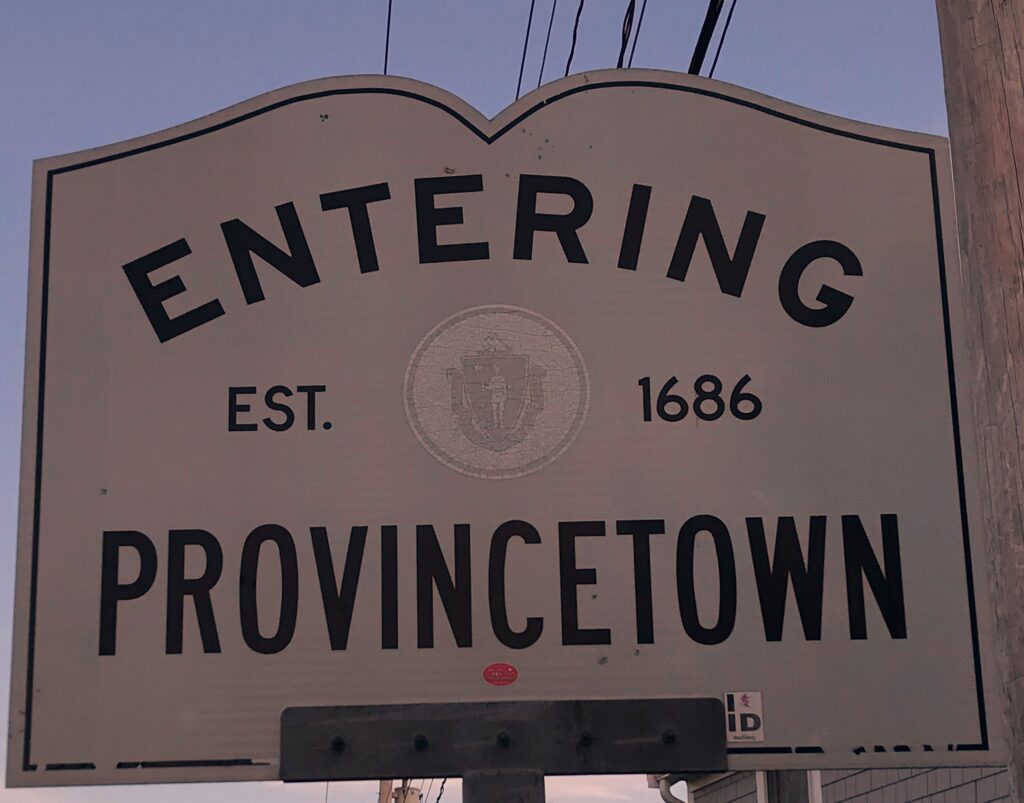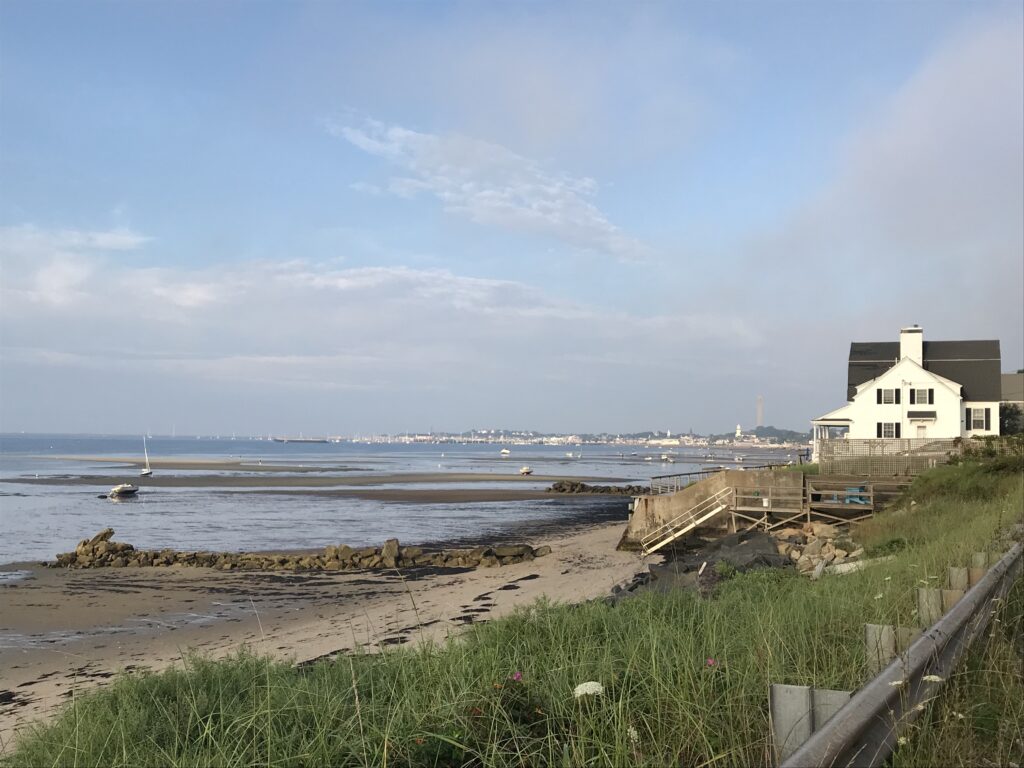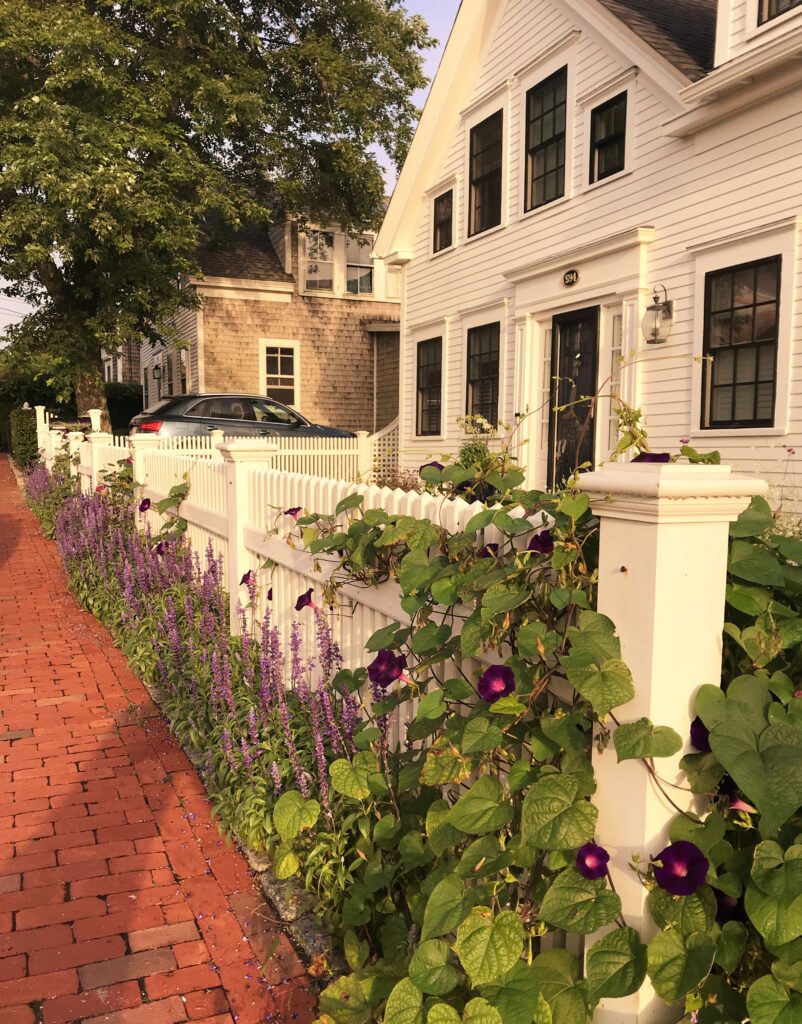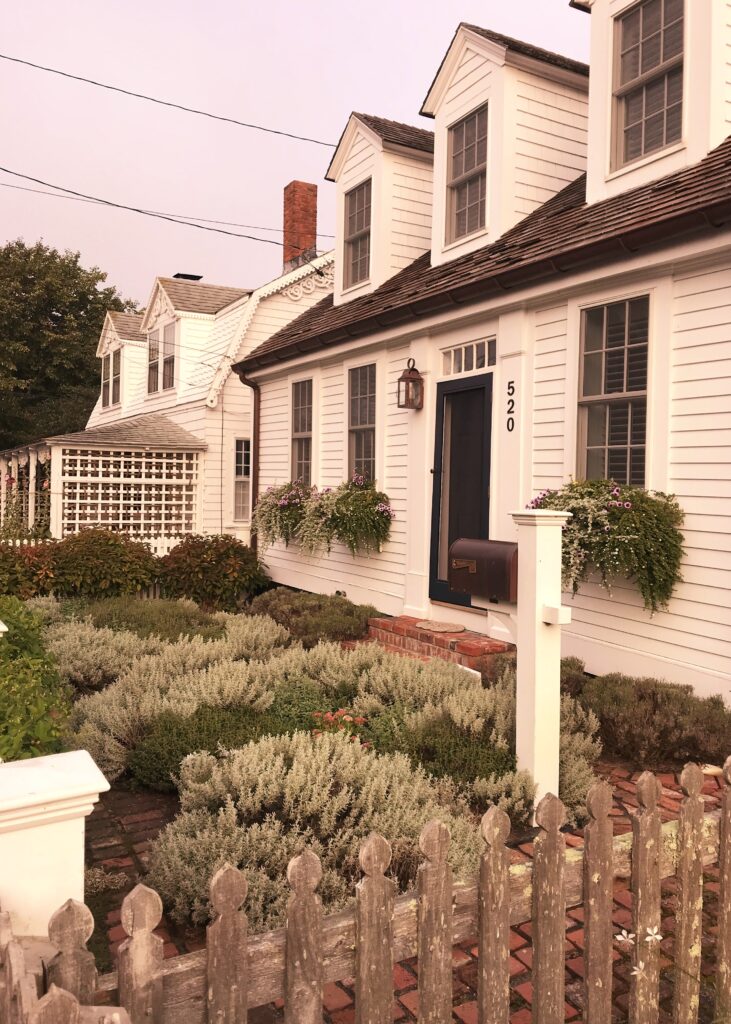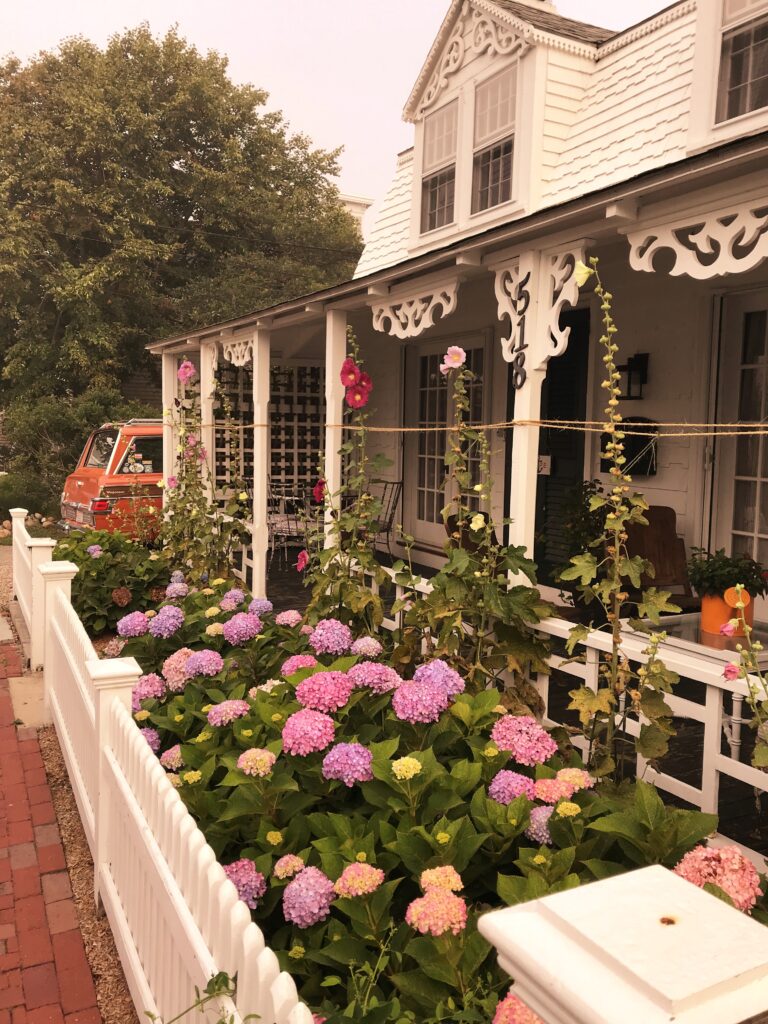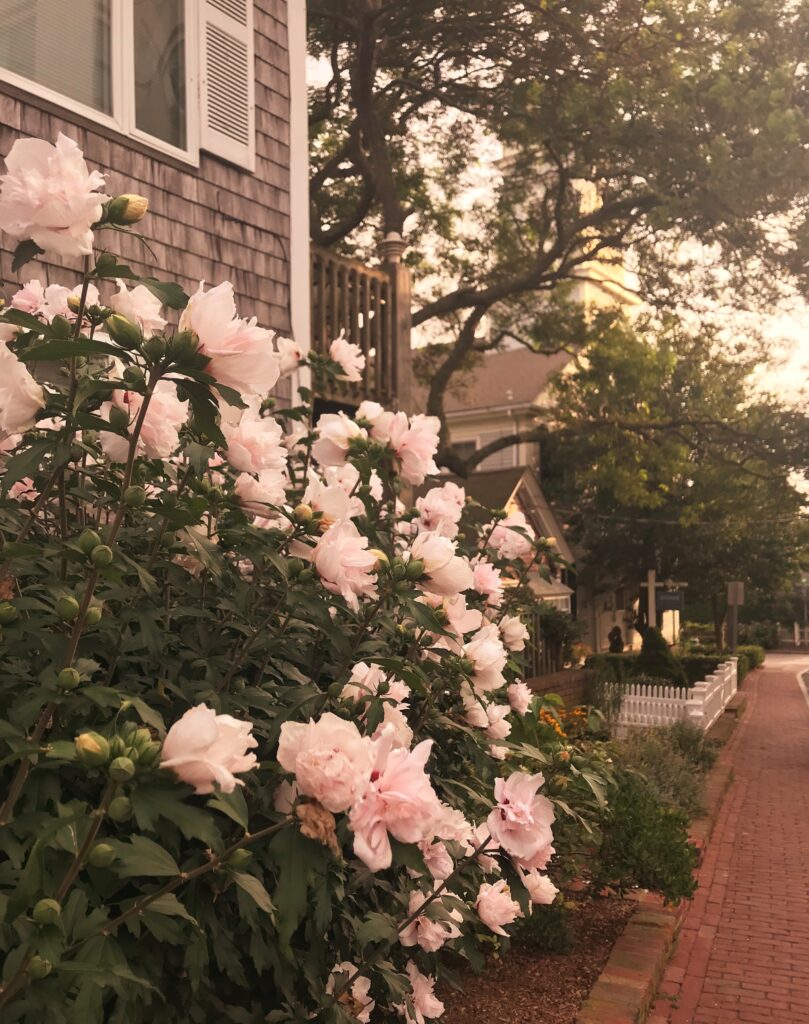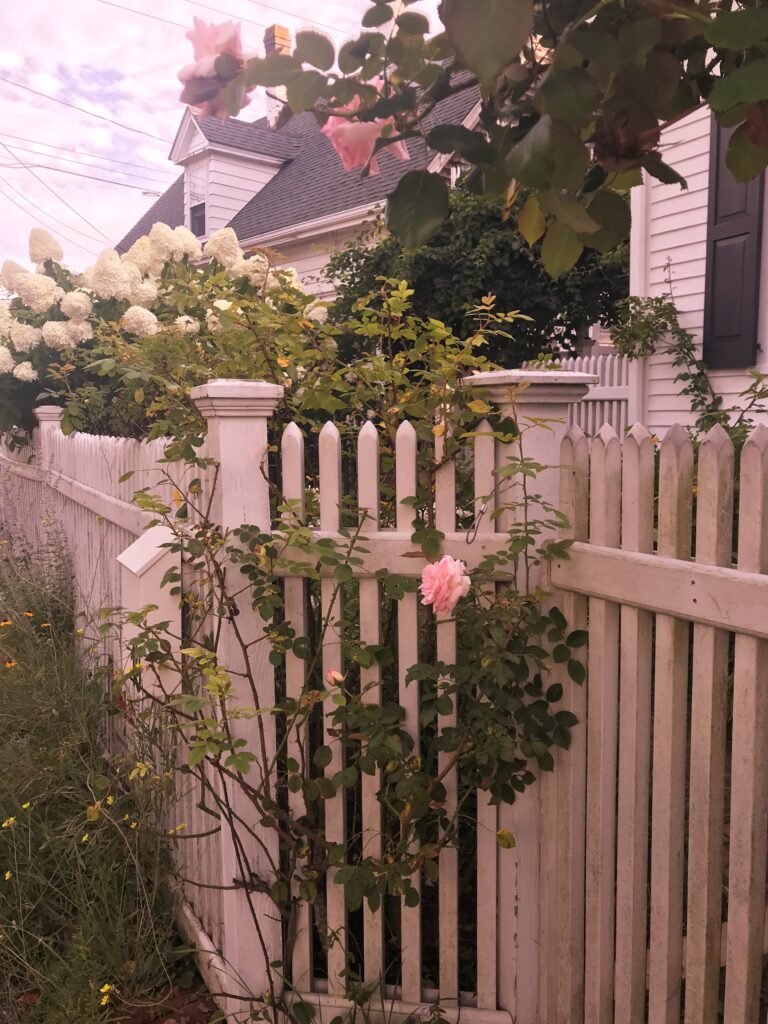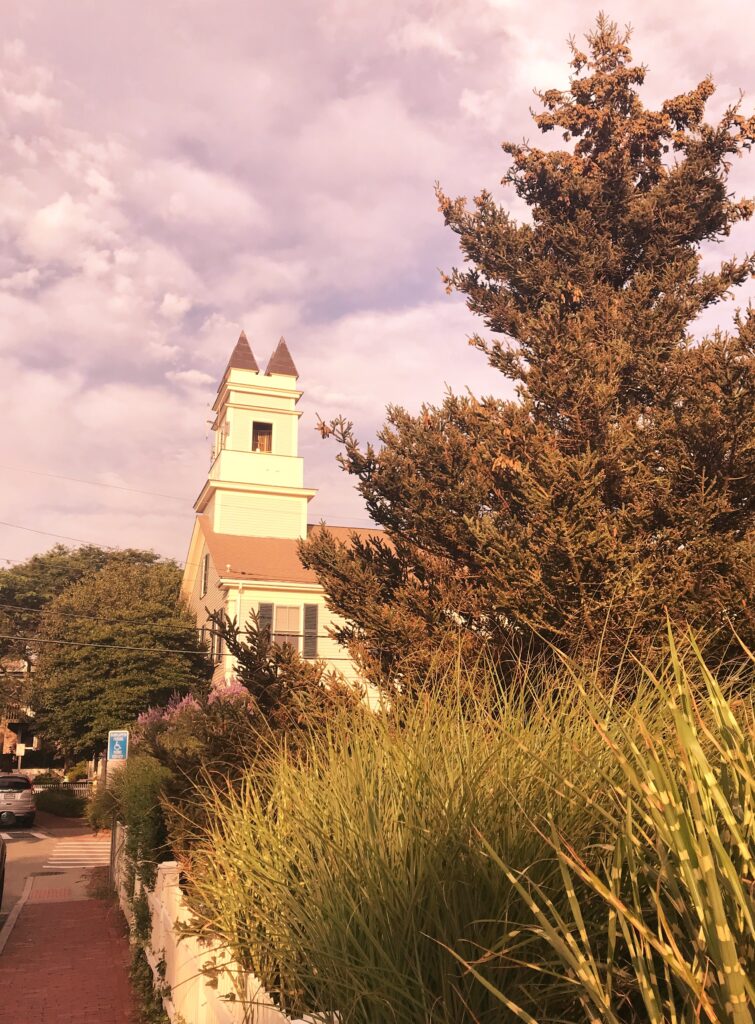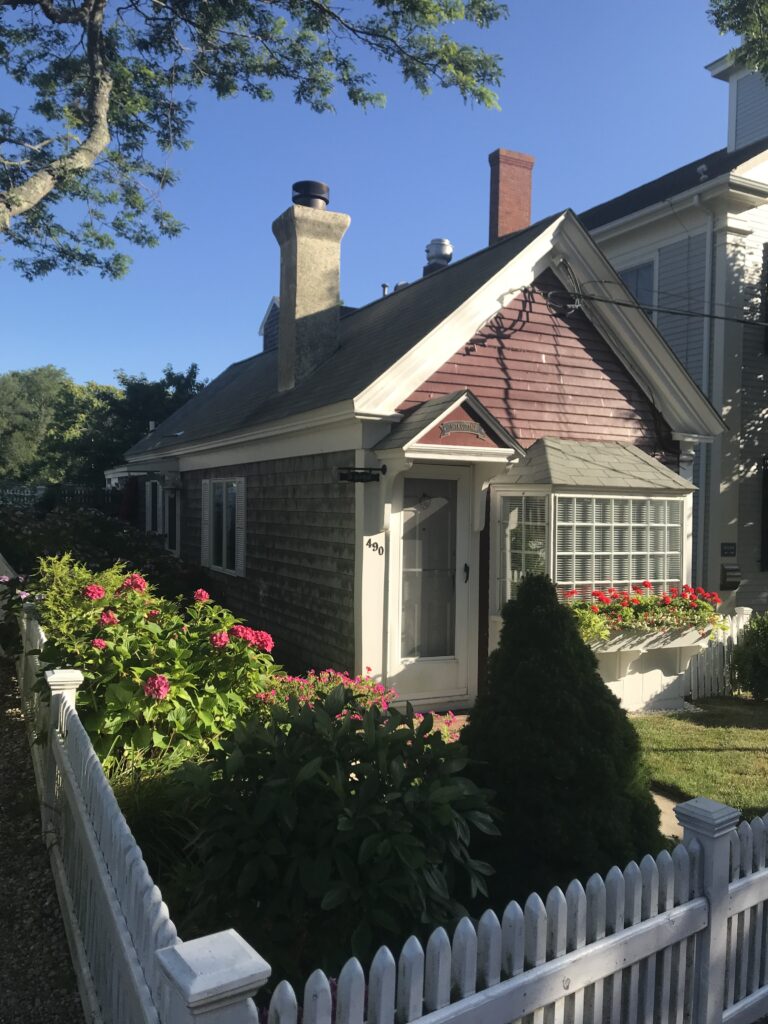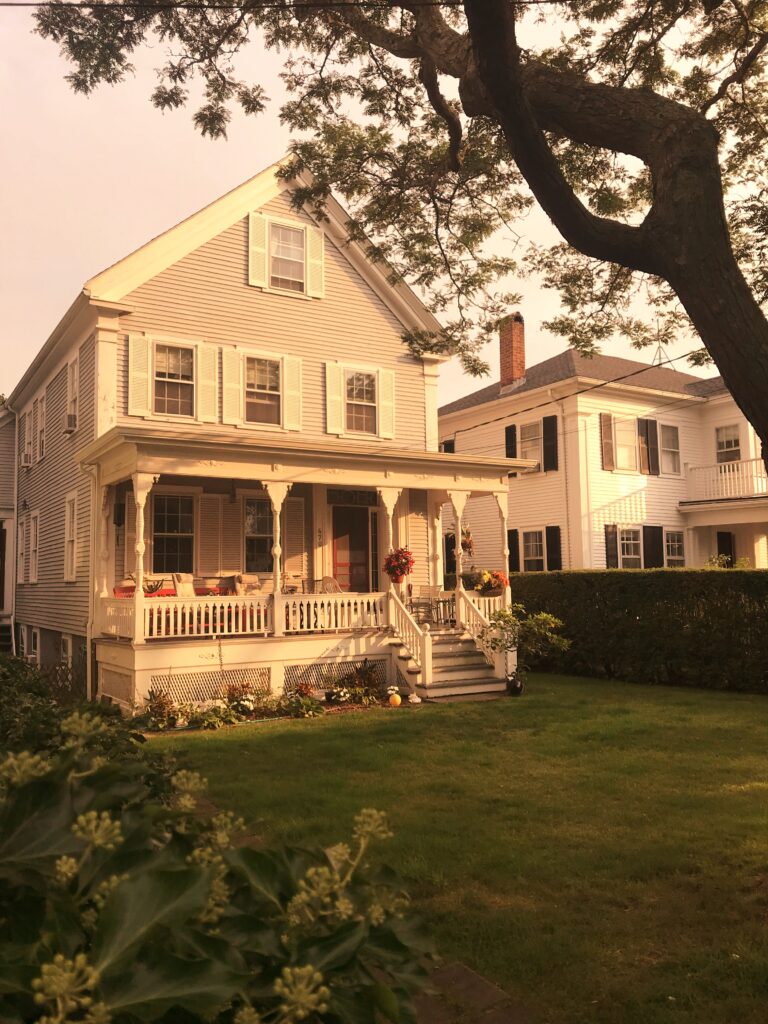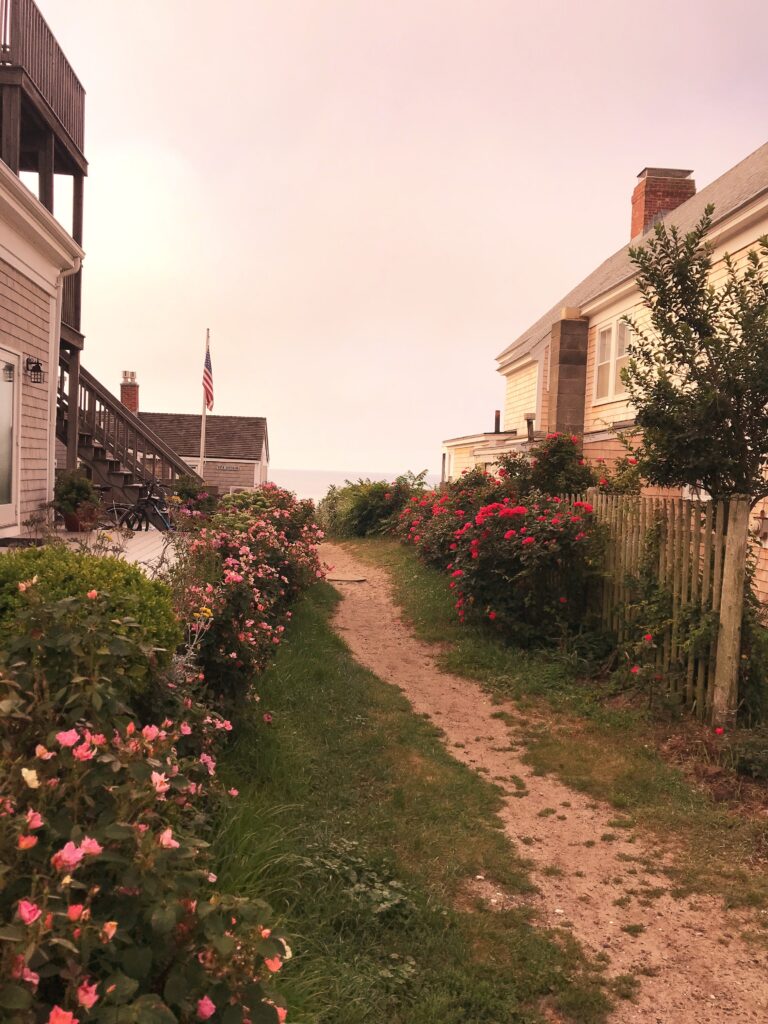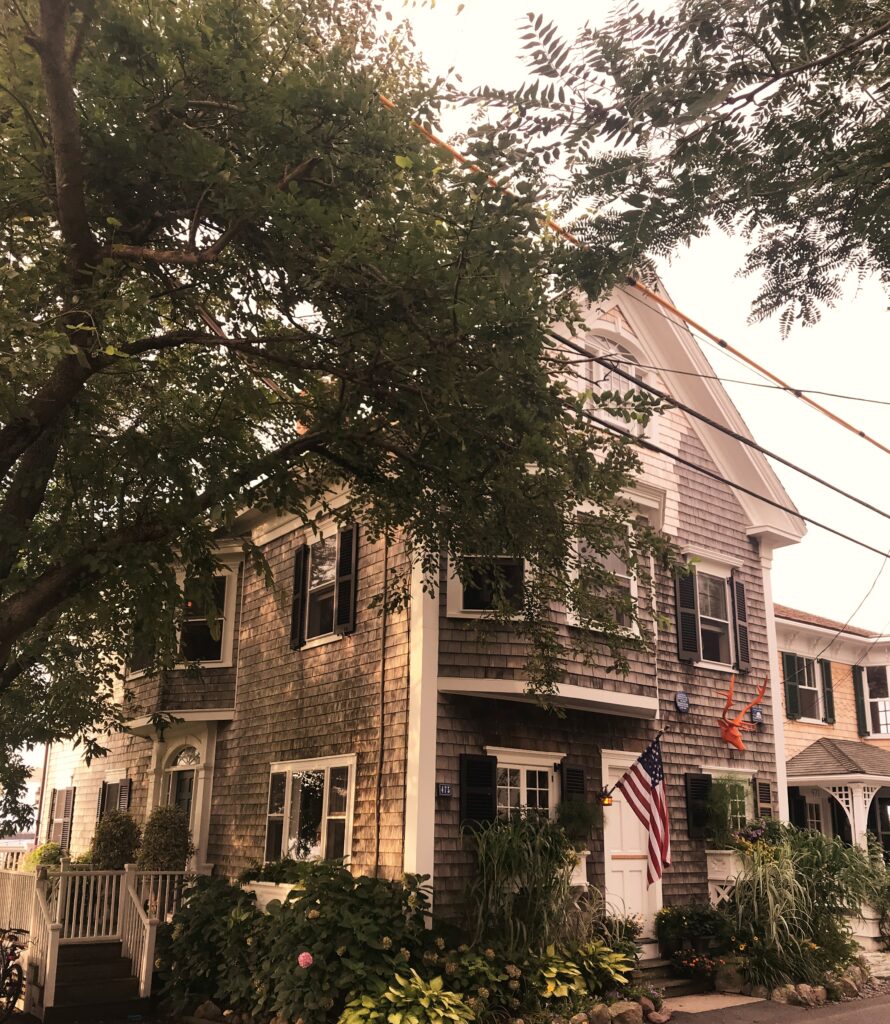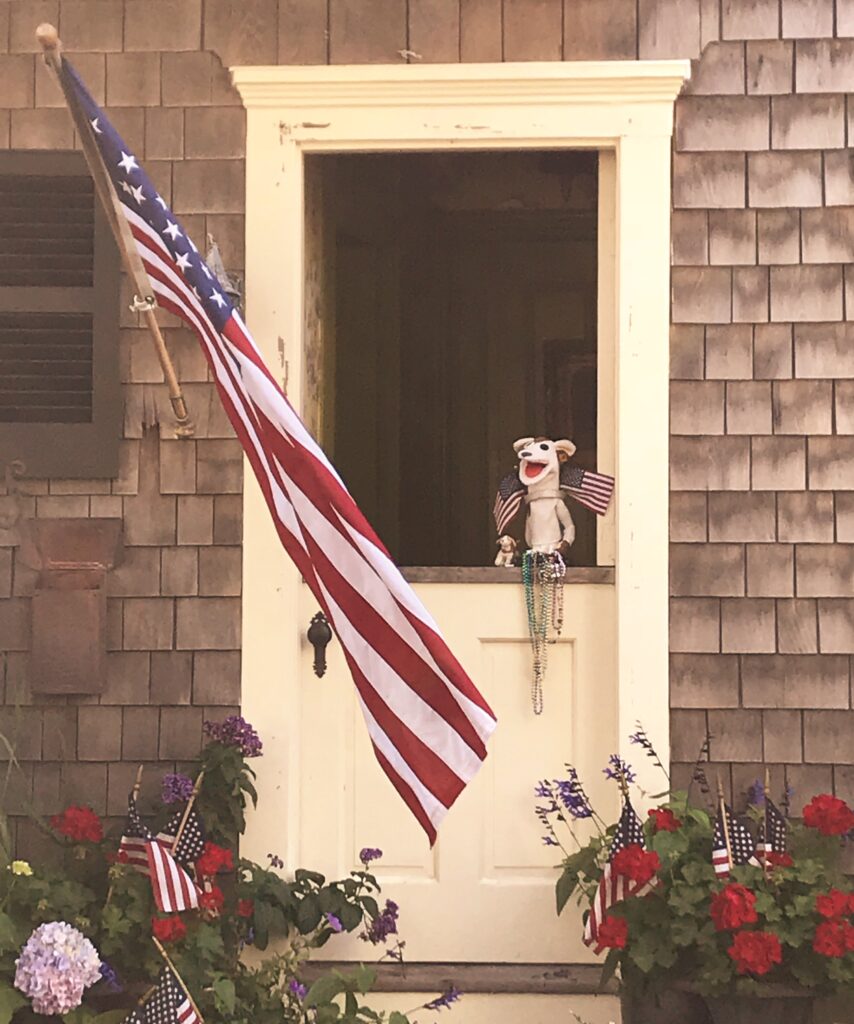Back in the Covid summer of 2020, it seemed reasonable to hope that in a year, a visit to the Cape would no longer involve considerable pandemic restrictions for the vaccinated. But that was well before the rise of the Delta variant and Provincetown’s post-July 4th surge in breakthrough infections. Therefore, many of our favorite activities–dining inside at restaurants, seeing musical and comedy shows, singing in a packed crowd of strangers around Bobby Wetherbee’s piano at the Crown & Anchor–remained off limits. There would be no festive Ptown nightlife for us this time, sadly. We didn’t, and still don’t, want to take risks that could bring the virus back to my mother. But walking through town in the early mornings, when the streets are nearly empty, seemed safe. I don’t always walk down Shore Road further into Truro. Sometimes I head in the opposite direction, and before long, I’m in Provincetown.
In terms of actual area, Provincetown is a small place. Its narrow, curving peninsula occupies about seventeen and half square miles. But surrounded on three sides by water, and with the vast, ever-changing sky above, it seems much larger. The year-round population is less than 3,500, but it swells to about 60,000 in the summer. The town’s spirit, too, like its capacity to receive guests, is generous, expansive, and welcoming.
Provincetown’s colorful present is matched by a colorful past; there’s a lot of history here. The original residents were the Nauset tribe, who interacted with the Pilgrims not long after they arrived on the Mayflower in 1620. The Nauset, and their neighbors the Wampanoag, like many of the Europeans who followed, valued the area and its deep, protected harbor, primarily for its excellent fishing. The Pilgrims moved on in two months to Plymouth, but the colony continued to rely heavily on fish from its waters. The town was a prominent whaling center for nearly two hundred years. Provincetown whaling ships sailed as far as the Azore Islands, where Portugese sailors often joined the crews. By the 1860s, Provincetown was home to a substantial, and growing, Portugese community. The railroad made the remote village more accessible in the 1870s, and the area’s great natural beauty began attracting tourists and artists. The first of many art schools opened in 1899. By the early twentieth century, Provincetown had become a destination for writers and theater people, as well as visual artists. In the summer of 1916, the Provincetown Players gave the first-ever performance of a play by the young Eugene O’Neil. When Tennessee Williams arrived in 1940, a gay community was already flourishing. In the 50s and early 60s, attempts were made to shutter gay-themed entertainment spots. These efforts failed. Today, Provincetown welcomes everyone. It’s a big-hearted, good-humored, judgment-free zone, a place where no one is a misfit, where no one is friendless for long.
And it’s a beautiful place. In the quiet early morning, it’s especially easy to appreciate the town’s charming architecture and gardens, and to catch near-hidden glimpses of the bay between buildings. On my walk from Truro, I usually pause at a wooden stairway leading to the beach, where I take in the view above. The big white house at far right, with the bay and the curve of the town behind it, is one of the most frequently painted and photographed scenes on the entire Cape. A Colonial Revival built in 1917, the house is situated near the division of Route 6A into the town’s two main streets, Commercial and Bradford. It’s at this point that Provincetown starts to look and feel like a real town, rather than a sparse collection of homes along the water’s edge. All the buildings in this post are situated along Commercial Street.
Provincetown has the typical resort town’s share of tee shirt and knick-knack shops. But even most of these are enclosed in architecturally charming exteriors, and clustered primarily in the busy central section. After passing the white Colonial house, I’m in the largely residential East End, a contrast to the touristy bustle of the town center. The front yard pocket gardens along this peaceful stretch of Commercial Street are often color-coordinated and carefully tended. They offer proof that small, thoughtfully planted spaces can pack an outsized visual punch. Many art galleries are mixed in among the East End homes.
Originally the Eastern School, the towered structure above, like many historic Provincetown buildings, has seen several uses. It’s currently the home of art galleries and WOMR-FM (Outermost Community Radio).
Teeny tiny Iota Cottage, above, got its name from a former owner, Jonathan “Jot” Small, who somehow managed to run a restaurant here in the 1930s.
A few homes, like this one on the land side of Commercial Street, stand out for their luxuriously expansive lawns, rare in beach communities.
I find it hard to imagine a more pleasant low-key approach to the water than this narrow, rose-bordered sandy lane.
Small blue plaques on many Provincetown buildings indicate points of historical importance and associations with well-known people. The house above was the home of Donald MacMillan (1874-1970), for whom MacMillan Wharf, in the town center, is named. The influential Arctic explorer, scientist, sailor and teacher lived here as an adult; he was born a few doors down on Commercial Street.
The current owners clearly delight in their unique and historic home. I often notice what appears to be a dog puppet perched, as though to welcome guests and greet passersby, in the upper, open half of the Dutch door. I see this happy puppet, accompanied by seasonal decorations, as a manifestation of Provincetown’s jovial, quirky hospitality. Look closely, and you’ll see similar expressions all over town. It’s just that kind of place.
Check back next week, as the Provincetown tour continues into the center of town and out onto Bradford Street.

